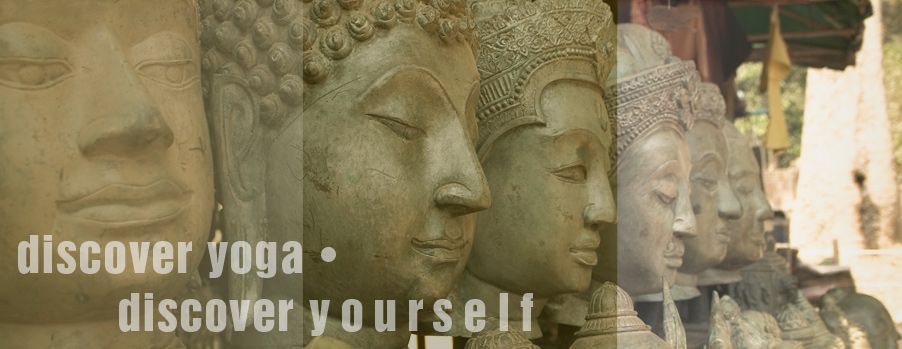
Kara Leigh-Grant explains how The Five Koshas Impact our yoga practice — here.
The yogis define our body as having five layers or sheaths, each one contained within the other, like Russian Dolls.
Called Koshas, these sheaths cover every aspect of our being, from the most gross to the most subtle.
Kosha #1 is Annamaya kosha – the outside layer of the body, and roughly translates at the food body.
This is our physical body – our muscles and our bones, our ligaments and our tendons. This is the kosha most people are concerned about when they begin a yoga practice. They want increased flexibility, they want to tone up their muscles, they want to learn to relax their bodies, they’re looking to gain strength, improve their balance and find stress relief.
The primary way to impact this kosha is through asana.
The practice of asana will also impact Kosha #2, Pranamaya kosha – the energy body.
Like the Chinese have chi, the yogis have Prana – or life force. Prana moves around the body via channels, or nadis. Some 72,000 apparently, although who counted them, nobody knows. When we practice asana and pranayama, we are impacting Pranamaya kosha.
Any blockages in those nadis (and believe me, you’ll have blockages) are worked through, bit by bit. And your improved flow of energy in the body can then affect the Annamaya kosha and also impact any health issues you may be having.
Prana comes into the body via food and water, but it also comes into the body via breath. One of the major benefits of yoga is that we become conscious of our breathing, and – sometimes for the first time as adults – we learn to take proper deep breaths.
This increase of prana into our system literally makes us feel more alive and it invigorates and powers Pranamaya kosha.
#3 on our tour of the Koshas is Manomaya kosha, the mental body.
People usually come to yoga for the physical benefits and stay because of how yoga impacts Manomaya kosha. Put bluntly, you feel bloody great after class – mentally clear and emotionally up-beat. That’s what keeps you coming back, time after time.
Manomaya kosha is that aspect of Self which takes care of our instinctual needs, plus it also helps us obtain our individual desires. On a practical level that means it’s about safety, security, obtaining love and taking care of loved ones.
If you’re experienced underlying anxiety because you’ve lost your job and you don’t know how you’re going to pay rent, you’re experiencing that in Manomaya kosha. A calming yoga practice like Alternate Nostril Breathing can alleviate those feelings and thoughts.
Most of us have a tendency to ‘live’ in one kosha more than the others. Some people are body-orientated, Westerners tend to be mind-orientated. However, the practice of yoga helps us to balance out our awareness of all the layers of Self and shift us out of being primarily just in Manomayakosha.
This can mean that our anxiety fades somewhat. It will still be there, but we may be more grounded in Annamayakosha or kosha #4 – Vijnanamaya kosha, the wisdom body.
That grounding in the Wisdom body gives us a broader perspective on our life experience, and we’re able to see that we’ll get another job, or that we have plenty of resources to call on. The anxiety fades.
Cultivating Kosha # 4 – Vijnanamaya kosha is an unexpected benefit of yoga for most people.
You turn up expecting an exercise class and wanting to touch your toes. But you find yourself connecting to a deeper level of intuition, greater internal wisdom and a sense of higher knowledge.
Granted, deepening into an awareness of Vijnanamaya kosha may take more a class once a week, but if you continue to practice, it will come.
It’s at this more subtle level of our Self that we begin to shift from a primary I-ness orientation – I am a separate being – to a primary One-ness orientation. We feel, and understand, on a deep level that there is no real difference or separation from Me and You.
We move beyond feelings and concern based on survival and security, and into feelings that encompass and include all – like compassion, love, and joy. Our relationships change, and become more fulfilling, and more joyous. Life simply becomes good. We’re well along the path of yoga and that journey from ego/mind or small self to Atman or Big Self.
Shifting into Vijnanamaya kosha is mostly about doing the work that removes the blockages in the three lower koshas. We find comfort and harmony in our physical body, we release blockages in our energy body, and we heal and release fears from our mental body.
Shifting more and more into Vijnanamaya kosha is like watching life upon up before you, into an expansive landscape where you love everyone. Truly love everyone.
Now that’s a pretty cool benefit of doing a few sun salutations every day huh?
Finally, there’s Kosha #5. Anandamaya kosha, or the Bliss Body.
Exactly as it sounds, it’s all about the Bliss Baby. No longer separate, you’re bathing in One-ness with All that Is. You and God, you’re One and the Same. And that’s about all I’m going to say about kosha #5, because if you’re getting there, you don’t need me to tell you about it. And if you’re not there, I can’t tell you about it, because I’m not there either.
Yet.
Read more — here.



